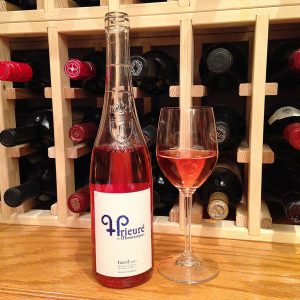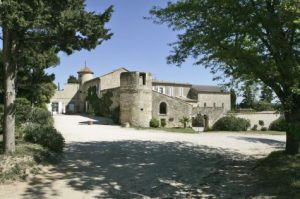Vivid crimson-pink color that glows in the glass; strawberry and flowers on the nose; strawberry, red watermelon, pomegranate, white cherry on the palate.
Medium body, very dry, racy acidity, brisk, crisp, clean, refined; pure, linear finish. This is not sip-around-the-pool-while-goofing-off wine; it is too dry and serious for that. Instead, discover the joy of rosé and food pairing—rosé is a good food wine, and this has the weight, acidity, and substance to hang with a variety of lighter meats and vegetable dishes. Will serve well as aperitif, especially with cheese and fruits. Blend of 55% grenache, 30% cinsault, 13% clairette, 2% mix of syrah, mourvèdre, carignan, bourboulenc. The grenache and cinsault add flashes of fruitiness to buffer the serious dryness.
Prieuré is French word for priory, a monastery typically subordinate to a larger abbey. Prieuré de Montézargues dates to 1199 and began producing wine in the 14th century. Vicissitudes of French politics meant the priory suffered times both hard and good over the next six centuries. The Richard family, notable winemakers in the southern Rhône, took control in 2000, ushering in another renaissance of Prieuré de Montézargues winemaking.
Tavel is a wine-growing AOC (Appellation d’Origine Contrôlée) in the southern Rhône of France, across the Rhône River from Châteauneuf-du-Pape AOC. All Tavel wines are rosés, so typically name rosé does not appear on the label. In France, Tavel means rosé. French rosé wines primarily come from two regions: Provençe and Tavel. Tavel is just north of Avignon while Provençe is south of Tavel against the Mediterranean, with Marseille and Toulon the major cities. Provençe rosés usually are lighter in style—fun in the sun picnic pours—while Tavel often is more serious, with heavier weights and drier, although both regions focus on dry rosé. $22
Prieuré de Montézargues (French language)
U.S. distributor of Prieuré de Montézargues Tavel website
Second photo: Prieuré de Montézargues winery.


